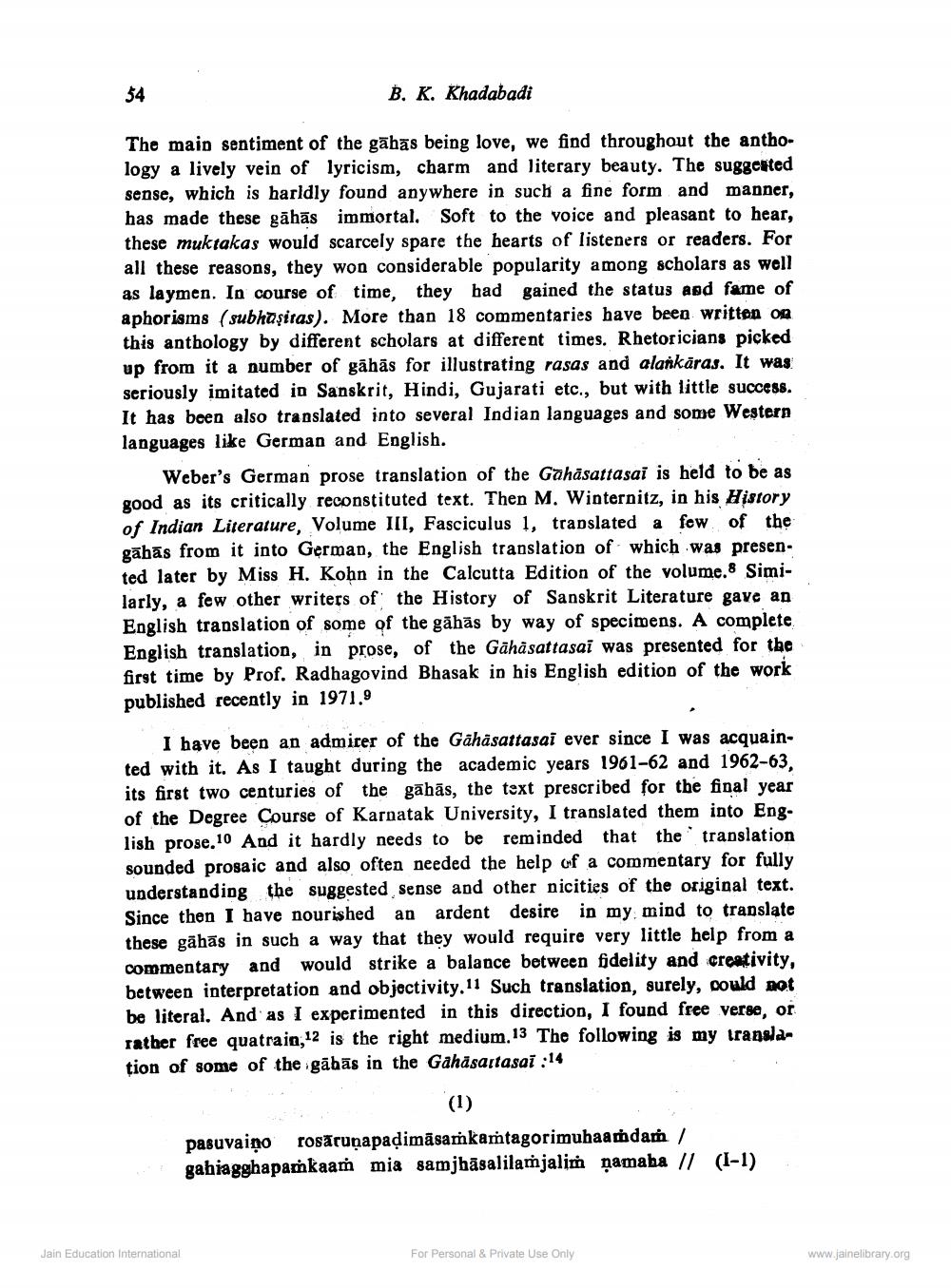________________
54
B. K. Khadabadi
The main sentiment of the gāhās being love, we find throughout the anthology a lively vein of lyricism, charm and literary beauty. The suggested sense, which is harldly found anywhere in such a fine form and manner, has made these gāhās immortal. Soft to the voice and pleasant to hear, these muktakas would scarcely spare the hearts of listeners or readers. For all these reasons, they won considerable popularity among scholars as well as laymen. In course of time, they had gained the status and fame of aphorisms (subhūşitas). More than 18 commentaries have been written ona this anthology by different scholars at different times. Rhetoricians picked up from it a number of gāhās for illustrating rasas and alankāras. It was seriously imitated in Sanskrit, Hindi, Gujarati etc., but with little success. It has been also translated into several Indian languages and some Western languages like German and English.
Weber's German prose translation of the Gahāsattasai is held to be as good as its critically reconstituted text. Then M. Winternitz, in his History of Indian Literature, Volume III, Fasciculus 1, translated a few of the gābās from it into German, the English translation of which was presented later by Miss H. Kohn in the Calcutta Edition of the volume. Similarly, a few other writers of the History of Sanskrit Literature gave an English translation of some of the gāhās by way of specimens. A complete English translation, in prose, of the Gāhāsattasai was presented for the first time by Prof. Radhagovind Bhasak in his English edition of the work published recently in 1971.9
I have been an admirer of the Gahasattasai ever since I was acquainted with it. As I taught during the academic years 1961-62 and 1962-63, its first two centuries of the gābās, the text prescribed for the final year of the Degree Course of Karnatak University, I translated them into Eng. lish prose. 10 And it hardly needs to be reminded that the translation sounded prosaic and also often needed the help of a commentary for fully understanding the suggested sense and other nicities of the original text. Since then I have nourished an ardent desire in my mind to translate these gāhās in such a way that they would require very little help from a commentary and would strike a balance between fidelity and creativity, between interpretation and objectivity. 11 Such translation, surely, could not be literal. And as I experimented in this direction, I found free verse, or rather free quatrain, 12 is the right medium. 13 The following is my translation of some of the gābās in the Gahasaitasai :14
(1)
pasuvaiņo rosaruņapadimāsarkamtagorimuhaamdam / gabiagghapamkaa mia samjbāsalilamjalim namaba 11 (I-1)
Jain Education International
For Personal & Private Use Only
www.jainelibrary.org




